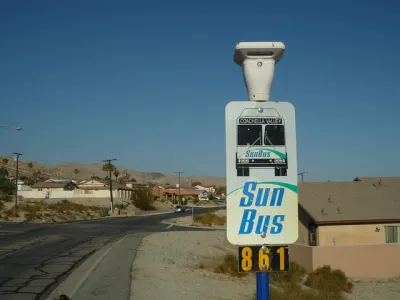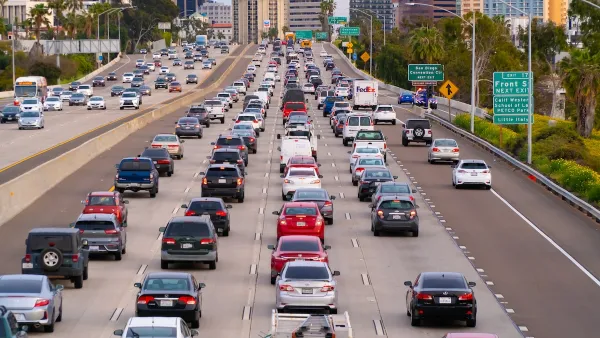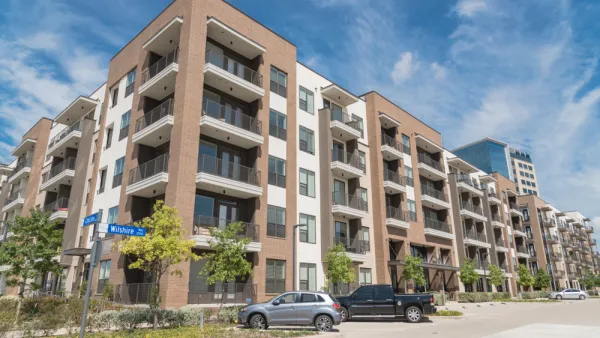As America's VMT returns to record highs, more of the miles are coming from cities than ever before.

"Urban driving is up 33 percent in that time; rural driving has fallen 12 percent," Henry Garbar writes for Slate. That is a huge change in vehicle miles traveled (VMT) and, while it's tempting to look for reasons in the classification of roads or in demographic change, those only account for part of the jump. "America’s cities (by which I mean, mostly, their sprawling exurbs) have grown by 19 percent in that time—meaning that bigger cities account for just 58 percent of the urban driving mileage increase," Garbar reports.
The missing 42 percent is hard to account for. It could be a result of transit decline, which is concentrated in cities, it could be that city drivers drive more when gas costs are lower, or it could have to do with the kinds of cities that are growing. "We know that urban growth—especially over the past few years—has been concentrated in sprawling Sun Belt metropolises, so it would make sense for driving to outpace urban population growth," Garbar writes.
Urbanists have long touted less need to drive as an advantage to city life. If cities and the way we use them continue to follow this trend, some of that advantage may whither away.
FULL STORY: Urban America Is Driving More. Rural America Is Driving Less. What Gives?

National Parks Layoffs Will Cause Communities to Lose Billions
Thousands of essential park workers were laid off this week, just before the busy spring break season.

Retro-silient?: America’s First “Eco-burb,” The Woodlands Turns 50
A master-planned community north of Houston offers lessons on green infrastructure and resilient design, but falls short of its founder’s lofty affordability and walkability goals.

Delivering for America Plan Will Downgrade Mail Service in at Least 49.5 Percent of Zip Codes
Republican and Democrat lawmakers criticize the plan for its disproportionate negative impact on rural communities.

Test News Post 1
This is a summary

Test News Headline 46
Test for the image on the front page.

Balancing Bombs and Butterflies: How the National Guard Protects a Rare Species
The National Guard at Fort Indiantown Gap uses GIS technology and land management strategies to balance military training with conservation efforts, ensuring the survival of the rare eastern regal fritillary butterfly.
Urban Design for Planners 1: Software Tools
This six-course series explores essential urban design concepts using open source software and equips planners with the tools they need to participate fully in the urban design process.
Planning for Universal Design
Learn the tools for implementing Universal Design in planning regulations.
EMC Planning Group, Inc.
Planetizen
Planetizen
Mpact (formerly Rail~Volution)
Great Falls Development Authority, Inc.
HUDs Office of Policy Development and Research
NYU Wagner Graduate School of Public Service





























